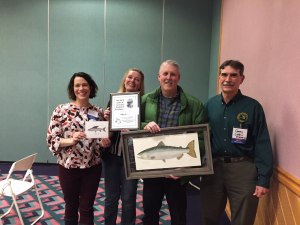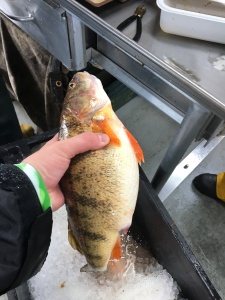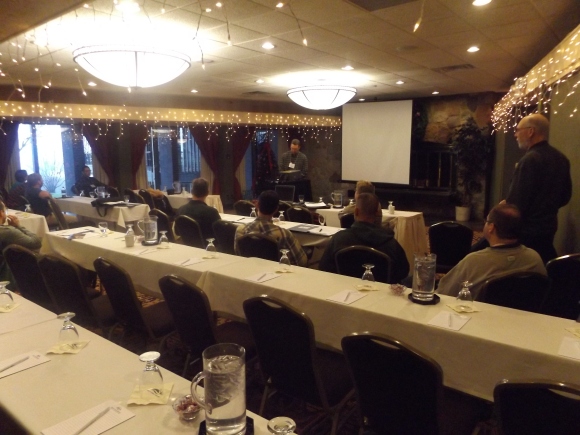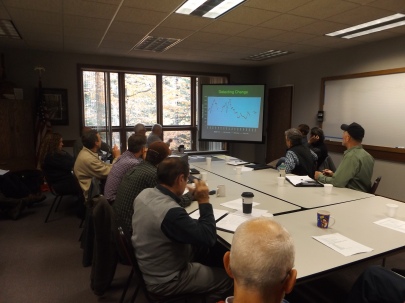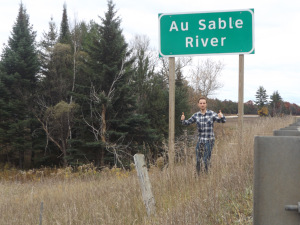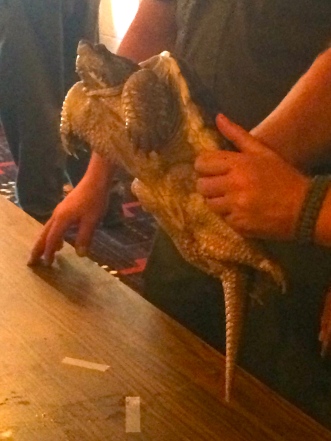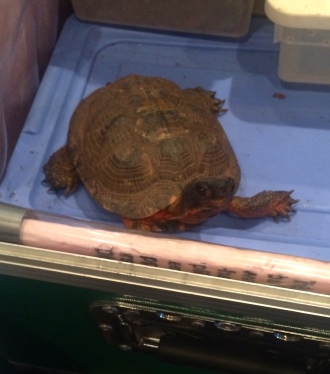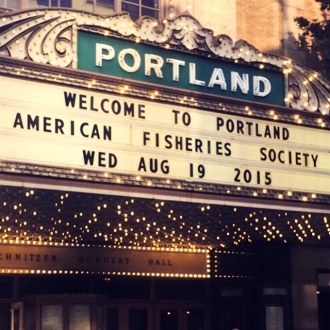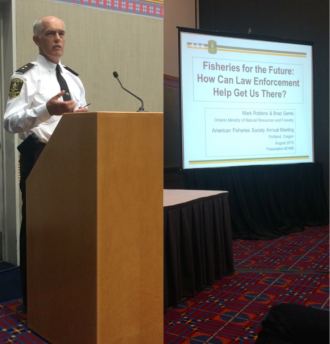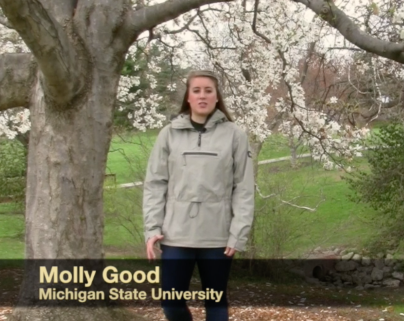by: Katie Kierczynski and Sam Betances
As our time as Fenske Fellows comes to a close, we are delighted to share our insights from the Fellowship on this blog. We have really enjoyed our Fenske experience and have been very busy working on our respective projects and attending various Michigan Department of Natural Resources (MDNR)/fisheries management meetings throughout the state. The opportunity to observe the management process from start to finish as we have gone through our Fenske experience has been an exceptional opportunity that would not have been possible without this fellowship.
We have each had the chance to participate in field work with our mentors: Sam was able to sample Lake Sturgeon in the St. Clair River, while Katie participated in the spring Lake Trout survey in Northern Lake Huron. In addition to seeing how data were collected and processed, we were able to see how the data were communicated to other fisheries professionals at Basin Team meetings, the annual biologists conference, the Lake Huron Technical Committee meeting, and the Lake Committee meeting hosted by the Great Lakes Fishery Commission. Our attendance at Research Inventory Team meetings and a research section meeting showed us how data were transferred into information used to make on-the-ground decisions. New management/legislation was also discussed at many of these meetings and we were extremely excited when fish orders (i.e., proposed regulation changes) that we first learned about at the annual biologists meeting were approved at a recent Natural Resources Commission meeting.
While we have greatly enjoyed learning about the internal workings of the MDNR, our favorite part of this fellowship has been the personal connections we have made. Our agency mentors, Todd Wills, Jan-Michael Hessenauer, and Dave Fielder have all been instrumental in not only assisting our understanding of the MDNR and fisheries management, but also in connecting us with other professionals in the field. Those professionals were willing to take the time to answer questions that we had, whether the questions were about specific happenings at meetings, general insights into the MDNR and fisheries management as a whole, or even tips for interviewing. In particular, Jessica Mistak and Gary Whelan always made themselves available to us for conversations regarding navigating the job search and potential career directions, introducing us to professionals outside of the region, and showing us how to be more involved in the national AFS goings-on. We are grateful to all of the professionals who have welcomed us at the many meetings and conferences that we have attended as part of this fellowship, and especially to Kelley Smith and his wife, Molly, for the opportunity to gain so much experience in honor of Jan.
While we encountered many great mentors, both men and women, during our experience, it was inspiring to meet so many women professionals in fisheries. In our past experiences, we have had limited opportunities to have women in fisheries as mentors outside of academia. Not only were we welcomed and advised by many of these women, but we also appreciated a vision of us in their shoes in the not-too-distant future. Representation in fisheries really matters, and we are incredibly grateful for all of the women who have come before us that have allowed us this opportunity. Jan Fenske, in particular, was the first female fisheries biologist in the MDNR Fisheries Division. Her legacy lives on in the many talented women currently in the division and will be continued on to the next generation. The impact of this fellowship on our lives will not lessen over time. We look forward to using our lessons learned from this experience as future fisheries professionals and the opportunity to be future mentors to women in fisheries management.
- Kelley Smith (second from right) with Fenske Fellows, Sam Betances, Katie Kierczynski, and Elle Gulotty (left to right) at Michigan AFS 2019.
- Kelley Smith was awarded the Michigan AFS Leonard Award in 2019 “to recognize outstanding professional competence and achievement of a professional employed in the field of fisheries or aquatic biology in Michigan.” Pictured left to right: Jessica Mistak, Molly Smith, Kelley Smith, Gary Whelan.
- Sam greatly enjoyed sampling Lake Sturgeon with her mentors on the St. Clarie River.
- Katie was super excited to get her hands on some neat fishes while aiding MDNR in the spring Lake Trout survey in Northern Lake Huron (photo credit: Nick Yeager).


